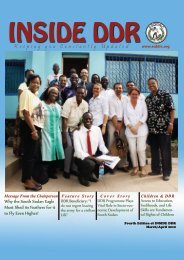Examining Enterprise Capacity - SSDDRC
Examining Enterprise Capacity - SSDDRC
Examining Enterprise Capacity - SSDDRC
Create successful ePaper yourself
Turn your PDF publications into a flip-book with our unique Google optimized e-Paper software.
Northerners and southerners<br />
perceived the armed conflict<br />
differently. National<br />
governments in northern<br />
Sudan, both civilian and<br />
military, did not address the<br />
armed conflict with a sense<br />
of urgency. Rather, they<br />
considered it a ‘southern<br />
problem’ (Deng 1995).<br />
Ahmed Sikainga, for<br />
example, observes that<br />
northern politicians have<br />
always viewed the south as<br />
“an afterthought, an<br />
appendage and a<br />
marginalized section of the<br />
society” (Sikainga 1993: 81).<br />
Successive democratically<br />
elected governments – the<br />
Umma Party (UP) and its<br />
sectarian twin, the Democratic Unionist Party (DUP) – have consistently avoided addressing the root<br />
causes of the conflict, instead attributing the armed conflict to external factors such as colonialism,<br />
imperialism, communism, Christianity and Zionism (Ali and Mathews 1999: 196). Since 1989, the<br />
northern Islamic military government in Sudan has been claiming that “crusades targeting their<br />
religious orientation have contributed to the war in the south” (ibid). Each of these governments<br />
failed to attribute the root causes of the armed conflict to deeply constructed forms of oppression<br />
and inequality. Historically, the conflict in Sudan has been defined by scholars and historians such as<br />
Francis Deng as a ‘war of visions’ between Muslims and Christians, north and south, and Arabs and<br />
Africans (Deng 1995). While some scholars (Kebbede 1999) broadly endorse Deng’s pragmatic<br />
culturalist vision, they view the unequal distribution of resources as central to the understanding of<br />
the armed conflict (Suliman 1999: 95).<br />
Remnants of the long-running civil war, Juba, April 2006.<br />
The perception that the conflict was due to one static root cause is problematic. Armed conflicts are<br />
not static; they change over time. In Sudan, the overlapping nature of the armed conflict has been<br />
demonstrated by many factors. First, it was a direct result of the lack of socio-economic development<br />
in Southern Sudan. Second, it was the legacy of bitter colonial and post-colonial memories of human<br />
enslavement, predominately carried out by northerners. Third, the conflict was attributed to a series<br />
of untrustworthy acts, un-kept promises and dishonored peace agreements between southerners<br />
and northerners. Since 1983, the discovery and production of oil has added a new dimension to an<br />
already volatile situation, literally fuelling the war.<br />
3 One could trace it back further, of course, to the slavery that took place from the early part of the 19 th century during the<br />
Turco-Egyptian imperial period of modern Sudanese history (1820-1884).<br />
5


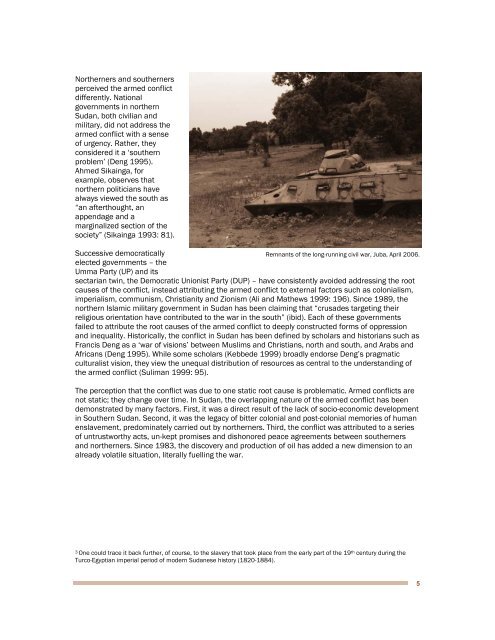
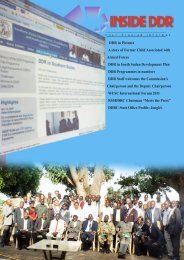
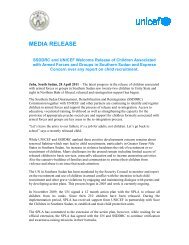
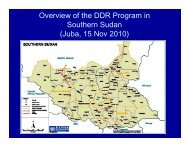
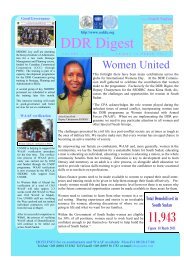
![Download here [975KB] - Republic of South Sudan DDR Commission](https://img.yumpu.com/10592740/1/184x260/download-here-975kb-republic-of-south-sudan-ddr-commission.jpg?quality=85)
